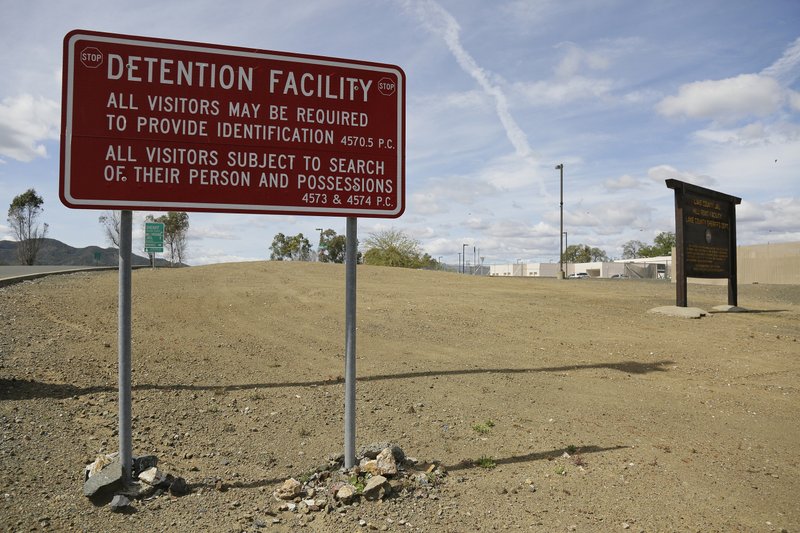National
Government fails to release data on deaths in police custody

More than four years after Congress required the Department of Justice to assemble information about those who die in police custody, the agency has yet to implement a system for collecting that data or release any new details of how and why people die under the watch of law enforcement.
The information vacuum is hampering efforts to identify patterns that might lead to policies to prevent deaths during police encounters, arrests and incarceration, say advocates and the congressman who sponsored the Death in Custody Reporting Act.
“The result of it is that people are not coming home,” said Jesselyn McCurdy, deputy director of the American Civil Liberties Union’s Washington legislative office. “They’re not coming home because they’re dying.”
The law, enacted in December 2014, is meant to paint a clearer picture of police-involved killings and deaths inside correctional facilities. It requires both state and federal law enforcement agencies to report information about those who die while under arrest, in the process of being arrested or while incarcerated.
The measure passed amid public outrage over police killings including the death of Michael Brown, an 18-year-old unarmed black man shot by a white police officer in Ferguson, Missouri. Now, a crisis of suicides in jails across the U.S. — prompted in part by the incarceration of the mentally ill — has raised interest in the law and its delayed implementation.
Until the Department of Justice begins collecting this information, the public will have no way of knowing how many people are dying or under what circumstances, said U.S. Rep. Bobby Scott, D-Va., the measure’s primary sponsor. With the data, Scott said, “We can at least begin the discussion.”
The 2014 law renewed and expanded a measure that had expired eight years prior. It required the DOJ to issue a report by the end of 2016 exploring how the agency and law enforcement could use the information collected to reduce deaths in custody. No such report has been completed, however, and advocacy groups worry the lack of accountability is letting law enforcement officials off the hook.
“Serving time in jail shouldn’t be a death sentence,” said Shannon Scully of the National Alliance on Mental Illness.
Late last year, the DOJ’s inspector general’s office issued a review criticizing the department’s failure to move ahead. A string of bureaucratic hurdles caused the biggest holdups, the report found, most notably ongoing debates over what methodology to use to collect data. The report noted a new system isn’t likely to be in place until October at the earliest.
The agency has continued collecting some data about in-custody deaths under its old standards, but the Bureau of Justice Statistics, the DOJ arm responsible for releasing it, is years behind.
Statistics through 2016 should be made public sometime this summer, spokeswoman Tannyr Watkins said. She blamed the delays in part on understaffing due to a hiring freeze from 2017 until April of this year. With the freeze now lifted, the agency “will expeditiously move to hire staff to fill the most critical positions,” she said.
Scott said the DOJ needs to do better, whatever the reasons.
“I’ve just been disgusted that the executive branch can’t figure out how to require people to fill out these little forms on a quarterly basis,” he said. “It can’t be that complicated.”
As the delays drag on, some states are moving to address the lack of data themselves.
In Oregon, a measure signed into law last month mandates that counties report to the state information related to the medical, mental and behavioral health of inmates and inmate death rates. The proposal followed a report by Oregon Public Broadcasting, KUOW public radio and the Northwest News Network that revealed at least 306 people had died since 2008 after being taken to county jails across the Pacific Northwest. The investigation found at least 70 percent of those inmates were awaiting trial and that suicide accounted for nearly half of all cases with a known cause of death. Deaths were tallied after reporters went county by county to seek information, because no state entity was required to amass it.
In some states, deaths in prisons are tracked at the state level but those that occur in local and county jails are not.
“It really is kind of a dark spot in our criminal justice system in terms of what we can figure out,” said Mike Schmidt, executive director of the Oregon Criminal Justice Commission.
Jail commanders in the state are eager to help but say funding and staffing are obstacles. In resource-strapped communities, departments say they can’t afford to hire new staff or divert the attention of current staffers.
“We’d have to essentially take from what we’re doing to protect and serve the community to do data pulls. And so it becomes difficult,” said Marion County Sheriff Jason Myers, who sits on the executive committee of the Oregon State Sheriffs’ Association.
Utah last year began requiring counties to report deaths in custody. State Sen. Todd Weiler introduced the legislation following a rash of deaths in jails across the state.
“We kind of wanted to know what was going on and if there was something we could do to try to … stem that tide,” he said.
The state’s first annual jail deaths report found that 71 inmates died in county jails from 2013 to 2017, and more than half were suicides.
Another Utah legislator, Rep. Carol Moss, had been working on similar legislation to reduce overdose deaths in correctional facilities as more people with addictions to opioids and methamphetamines land behind bars.
In an interview, she described incidents in which those not yet convicted had “virtually no medical care” and died while detoxing, adding that understanding the extent of the problem is the first step.
“In order to know how to address the problem,” she said, “we have to have data.”







